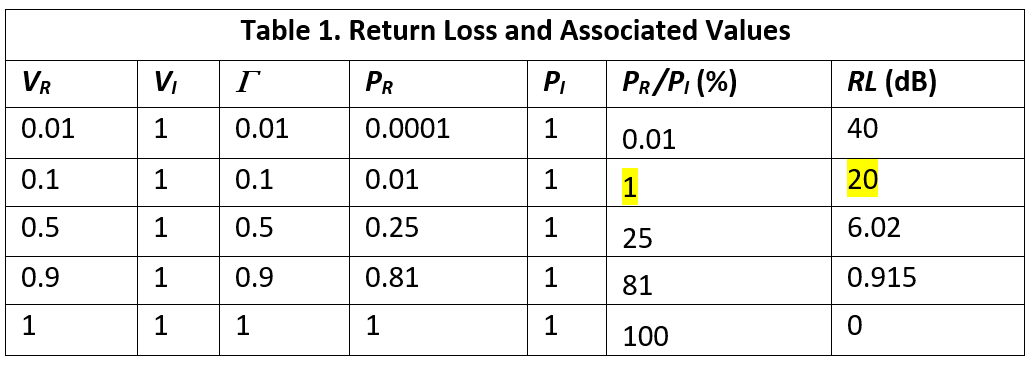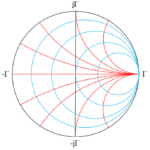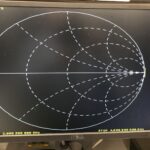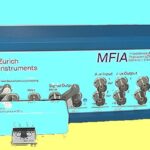These basic RF measurements often uncover system problems in wired and wireless communications.
If you observe a signal traveling from a source to a load through a passive system of some sort, you will notice that the signal attenuates by the time it reaches the load, and you will also notice that some of the signal reflects back to the source. Figure 1 shows an incident signal of power PI (blue arrow), reflected signal of power PR (red arrow), and attenuated signal of power PA (black arrow) reaching the load. The attenuation and reflection contribute to insertion loss (IL) and return loss (RL), respectively.

How do we calculate IL and RL?
Let’s start with RL, where we will focus on the source and system (Figure 2), which shows an incident signal of voltage VI and a reflected signal of voltage VR.

Looking into the source, we see a source impedance ZS, and looking into the load, we see a load impedance ZL. If ZS ≠ ZL, you will have reflections. In recent posts on the Smith chart, I discussed the reflection coefficient:
RL, expressed as a power level in decibels, relates to G as follows:
Note there’s a 20 in equation 2 before the log function instead of 10. That’s because G is a ratio of voltages. For RL, we need a ratio of power levels, which we can get by squaring the voltages or doubling their logarithms—using the latter approach gives us the 20. Table 1 shows some sample values for RL calculated from equation 2.
Wait, from your Smith chart posts I know we want to keep G low, which, from equation 2 and Table 1, implies keeping return loss high. How can high losses be good?
RL indicates loss from the perspective of the reflected signal. As the highlighted entries in Table 1 show, a 20-dB RL indicates that the reflected signal’s power represents just 1% of the incident signal’s power, or in other words, the reflected signal has “lost” 99% of the incident signal’s power. And that’s a good thing, because 99% of the incident signal’s power can continue to the load in Figure 1. Indeed, a 20-dB RL is generally considered good performance.
What about insertion loss?
Insertion loss refers to the amount of signal power lost in a system such as that in Figure 1 due to return loss as well as dielectric, copper, and other losses. For the Figure 1 system, you can calculate insertion loss in decibels as follows:
What instruments do I need to measure IL and RL?
The vector network analyzer (VNA) is the go-to instrument for these measurements. A VNA can measure the scattering parameters s11 and s21, which relate to RL and IL, respectively. Teledyne LeCroy elaborates here on S-parameters and their relationship to IL and RL.
You do have alternatives to the VNA. Tektronix offers an application note describing, among other things, how to use an oscilloscope to measure RL for 1000BASE-T Gigabit Ethernet. To determine IL for the Figure 1 system, you can use a signal generator to generate PI, measure PA with power meter or spectrum analyzer, and calculate IL using equation 3. And finally, time-domain reflectometry (TDR) is useful for evaluating RL. TDR enables distance-to-fault (DTF) measurements. If you have several hundred feet of underground cable that is suddenly exhibiting 0-dB RL, DTF can tell you where to start digging. Anritsu has more here.









Leave a Reply
You must be logged in to post a comment.